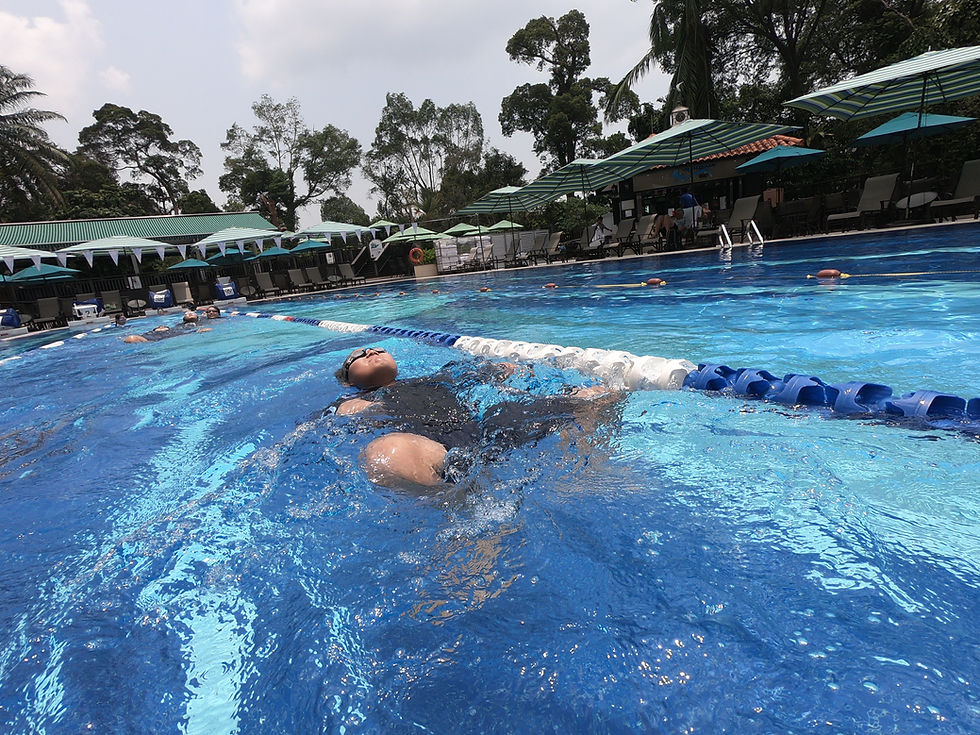The Importance of Safety in Swim Instruction
- SG Sink Or Swim

- Jul 22
- 3 min read

Swim instruction is about more than teaching strokes and techniques—it's fundamentally about ensuring safety in and around the water. Whether you're teaching toddlers, beginners, or competitive athletes, safety must always come first. It forms the foundation of every lesson, builds confidence in swimmers, and protects lives.
This article breaks down why safety is critical in swim instruction and how instructors, parents, and swimmers can work together to create a secure and effective learning environment.
🚨 Why Safety Should Be the Core of Swim Instruction
Drowning is one of the leading causes of accidental death in children worldwide. Even confident swimmers can face life-threatening situations in pools, lakes, or oceans. Proper swim instruction reduces these risks by:
Teaching life-saving skills like floating, treading water, and controlled breathing
Encouraging respect for water, not fear
Equipping swimmers with the knowledge to assess danger and make safe choices
Establishing habits that carry into recreational and competitive swimming
🧠 Key Safety Principles Every Instructor Should Follow
1. Constant Supervision
Always maintain direct eye contact with swimmers—especially non-swimmers or young children.
Position yourself strategically in the pool area for maximum visibility.
Avoid distractions like phones or conversations during instruction.
2. Structured Class Management
Group swimmers by age, skill level, and comfort in the water.
Keep class sizes manageable to ensure individual attention and control.
Use clear signals and whistle commands to communicate quickly and effectively.
3. Pre-Lesson Safety Checks
Inspect the pool area for slippery surfaces, loose lane lines, or debris.
Make sure emergency equipment (like rescue tubes and first aid kits) is accessible.
Confirm that water temperature and chemical levels are within safe ranges.
🛟 Essential Safety Skills to Teach in Every Program
✅ How to Enter and Exit the Pool Safely
Use ladders, steps, or side holds. No diving unless specifically trained and supervised.
✅ Back Floats and Recovery to Standing
Floating teaches body control and provides a survival tool if a swimmer gets tired.
✅ Treading Water
Treading helps swimmers stay above water in deep sections or during fatigue.
✅ Breath Control and Submersion
Understanding how to hold, release, and recover breathing is essential for panic prevention.
✅ Recognizing Distress
Teach children what drowning looks like (quiet, panicked movement) and to get help—not jump in to rescue unless trained.
👨🏫 Instructor Responsibilities Beyond the Lesson
Get certified in CPR, AED, and lifeguarding.
Stay updated on safety protocols and emergency procedures.
Communicate openly with parents about their child’s progress and any safety concerns.
Foster a supportive, no-shame environment where swimmers can express fear or discomfort.
👶 Special Considerations for Young Learners
Never assume a child is “safe” because they’ve passed a swim level.
Encourage safety through repetition—like always asking permission before entering water.
Avoid floaties or swim aids that create a false sense of security.
Teach parents how to stay vigilant even when their kids are strong swimmers.
🌊 Safety in Natural Water Swim Lessons
When teaching in lakes, rivers, or oceans:
Survey the area for currents, marine life, and underwater hazards.
Use brightly colored caps and safety buoys for visibility.
Establish boundaries and identify exit points before entering.
Keep students within arm’s reach in unpredictable waters.
🏁 Final Thoughts
Safety in swim instruction isn’t optional—it’s the core of effective teaching. From beginner lessons to advanced stroke clinics, safety awareness saves lives, builds trust, and creates a solid foundation for long-term swimming success. Whether you're a coach, instructor, or parent, make safety your number one priority in and out of the water.





Comments